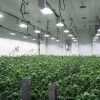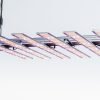Cannabis grow lights have a myriad of specifications, and traditionally wattage and lumen values have determined how strong and effective they are. However, in recent years, newer equipment such as Light Emitting Diodes, commonly known as “LEDs”, have come into the market boasting new lighting technology that has not yet been fully understood and embraced by the community.
Through this technology, we have now identified essential parameters that exhibit how effective good lighting can be for improving a cannabis grow operation. The specifications of the light’s output are probably the most significant information when deciding what light is best for your cultivation environment.
When examining output, the two most important terms are: Photosynthetically Active Radiation (or “PAR”) and the Photosynthetic Photon Efficacy (or “PPE”) of that light. These details are the most crucial information when choosing the right fit for your grow.
Let’s discuss what each term means and why they are vital to cannabis plants.
Photosynthetically Active Radiation
The most significant of these terms to understand is PAR, or the energy available from the light source that drives photosynthesis. Traditionally lighting companies listed wattage, and lumens/lux as a reference to measure the strength of a light. However, measuring lumens only tells you how bright the light source is, which is not a driver for plant growth.
Humans can distinguish brightness with our eyes, but plants don’t “see” it that way. Photoreceptors in plant leaves collect available energy to make photosynthesis happen. Therefore, it is more beneficial to understand how much of that energy is available for a plant to use, especially cannabis.
PAR is measured by examining the Photosynthetic Photon Flux (“PPF”), which is the available number of photons in µmol per second from the light source. When measuring how much photon energy hits the top of the canopy and subsequently the leaves to drive photosynthesis, it is measured in PPFD – the “D” being the density of the photons in µmol, per meter squared, per second.
The PPF tells you how much energy is available, while the PPFD tells you the actual amount of energy hitting the canopy.
To think of it in simpler terms, think of a rain cloud during a storm: the PPF would be equivalent to the amount of available rain coming from the cloud per second, and PPFD would be the actual measured amount of rain that hits the surface in a given area.
Knowing how much energy is available and how much is used by the plants should be the most critical factor when selecting fixtures and designing a lighting layout. Start by laying out the cultivation goals and the physical environment based on the setup for nutrition, temperature, humidity, and addition of supplemental compounds such as CO2. Then determine how much PAR would keep the metabolic rate of your plants at an optimal pace. With that assessment, look to the specific requirements for each piece of equipment, including the PAR from a light.
Photosynthetic Photon Efficacy
The concept of PPE is the next step in understanding the effectiveness of a lighting fixture. PPE is the PPF divided by the number of watts consumed (usually expressed in µmols/Joules of energy). The result shows how efficient the light and its components are in converting the electrical input wattage to achieve the stated PAR value. (The components being the individual LED diodes used to produce light and the electrical drivers that deliver the power to the diodes. We plan to examine the quality of these and other lighting components in future posts.)
So even if the light has a high PPF value, if the PPE is low, then the fixture is not efficient in converting power into useable light radiation. Hence why wattage alone should not be the sole deciding factor in any lighting decision.
Energy efficiency and savings are significant selling advantages of LEDs and any certifications which prove the efficiency are valuable, especially for commercial operations. Lights with a higher PPE rating produce the same amount of light with less energy costs.
Higher efficiency in LEDs assists in energy conservation and additional savings for cooling because traditional ballasts and lamps convert a significant amount of energy into heat. Highly efficient LED lights can hit up to 3.0 μmol·J. which is a massive shift in efficacy from conventional grow lights.
Multifunction Grow Lights
LED-ONE is Green Amber’s first multifunction grow light capable of precisely dialing in PAR and spectrum to conserve energy and produce higher-quality flowers. Certified for horticultural lights with Designated Light Consortium (DLC, the largest non-profit energy-saving agency in the world), our fixtures are tested in integrating spheres using the highest standards for energy efficiency and savings.
LED-ONE is DLC Hort listed, which makes it eligible for local utility rebates worth up to 50-75% of the purchase cost.
LEDs in the cannabis space are continually evolving with new technology, standards, and certifications. Many believed the power of the wattage found in traditional HPS and HID lights would never be supplanted by other technology. However, through discoveries in research and science of cultivation, it is becoming increasingly clear that LED lighting is the future of indoor and greenhouse growing.
Stay tuned! We will examine the various aspects of growing and understanding the technology behind LEDs in future posts.



